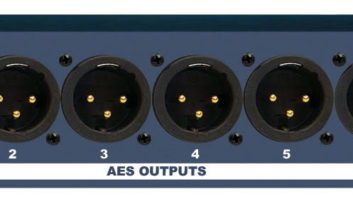Brent Barber is the AV director and radio/TV instructor at Crown Point High School, recently honored by the Indiana Association of Broadcasters as Radio School of the Year.
In constructing its studio, Brent minimized AC cable runs by using AC power cord splitters for low-amperage devices, and short pigtails to save AC outlet space when using wall-wart power supplies, as we’ve discussed here recently. Both are shown in the second photo and are available from Amazon.
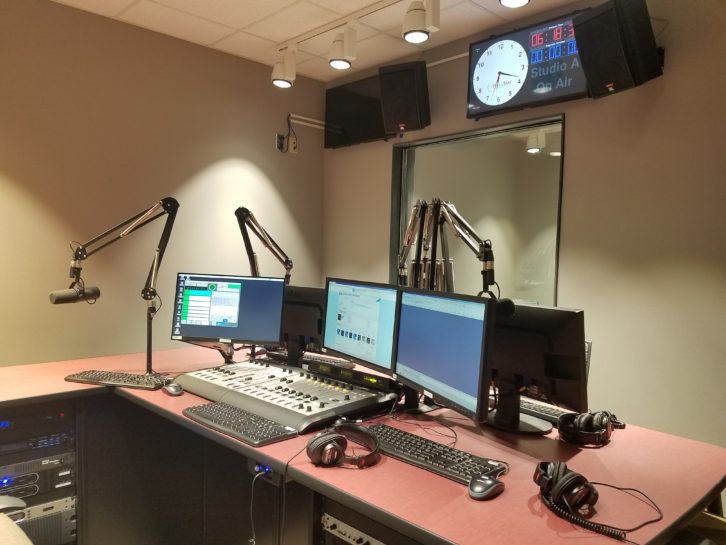
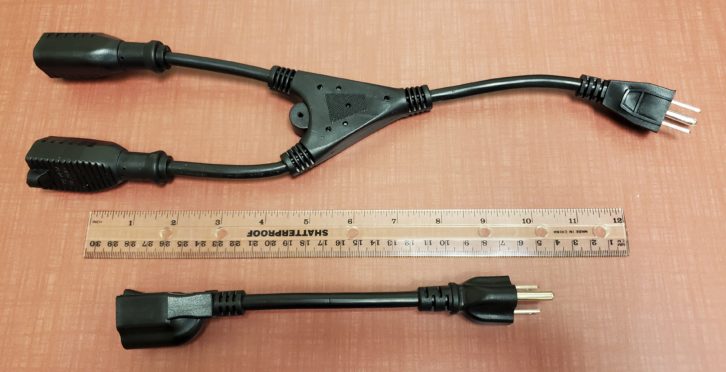
The station streams a hot AC format, hear it here.
“Clothespin! Stat!”
Veteran contract engineer and frequent Workbench contributor Stephanie Donnell saw the suggestion in our Oct. 26 issue from Art Reis, K9XI. Art used a rubber band to secure tweezers around a vertical bolt while he was replacing an LNB.
Stephanie has used a similar technique for years but instead of a rubber band, she uses a rubber grommet, as shown in the accompanying photo. She keeps several sizes in her toolbox.
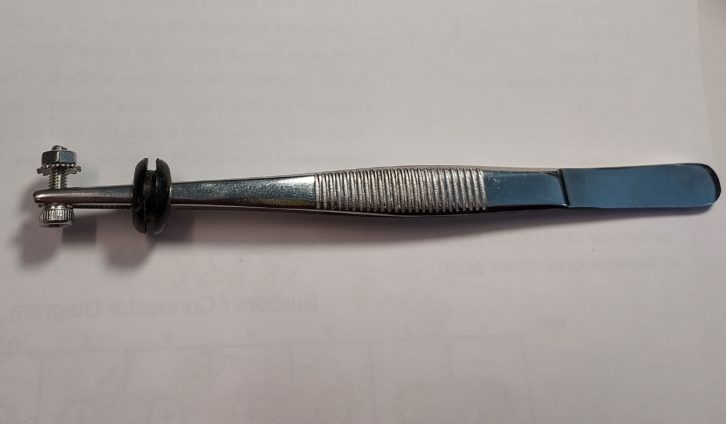
She adds that the surgical tweezers seen in the photo can hold vertically oriented hardware in place, but if necessary, other “tools” like an alligator clip can be pressed into service. If the bolts are long enough, even an old-fashioned wooden clothespin will work to keep them in place.
Another tool that can be helpful for holding delicate things are surgical hemostats. Stephanie remembers as a teen reading a suggestion in an issue of Popular Electronics to clamp a hemostat onto the lead(s) of a transistor to protect it from heat when soldered.
[Read Another Workbench by John Bisset]
No reflection on you
Here’s a resource tip for those interested in learning about voltage standing wave ratio, or VSWR.
Larry Wilkins, CPBE, was an engineering manager for Cumulus. In his “retirement,” he oversees engineering services of the Alabama Broadcasters Association. Among other things Larry coordinates classes for radio and television engineers, a program that has benefited technical learners well beyond the Alabama state line.
At this link, scroll to the bottom of the listed subjects and you will find an excellent tutorial on standing waves and impedance matching called “Understanding VSWR.” The lecturer is John N. Shive of Bell Laboratories.
Shive developed a visual wave generator and uses it to explain standing waves and the standing wave ratio. The film also shows how transformers match different “line” impedances, and why you don’t use 75-ohm coax to connect your 50-ohm FM exciter to the FM transmitter.
This lecture was filmed in 1959. Nevertheless I think you’ll find the demonstration riveting, as the concept is explained thoroughly.
Recommendations, please
In addition to offering that free tutorial video to Workbench readers, Larry, who also chairs the Alabama State Emergency Communications Committee, poses a question: “What are stations using for an inexpensive, reliable FM tuner for EAS monitoring?”
Over the years, we’ve described a number of EAS antennas, including some do-it-yourself offerings, but I don’t remember that we’ve discussed receivers.
Can you help? Email your suggestions (brand, model and cost) to [email protected].
Also remember you’ve still got time to submit your three most important items to check you visit a transmitter site. We’ll summarize suggestions soon and have some useful prizes for the best entries.
Can you hear me in there?
Dan Slentz discovered a website that offers sound panels made in China and designed to fit on a standard door. Kits start at $150.
The Arrowzoom KK1184 kit includes polyester fabric panels that measure 12 x 12 inches, in a choice of five colors. The site offers a 99 cent “sample” that options. If you “try and buy” let us know your thoughts. Check it out.
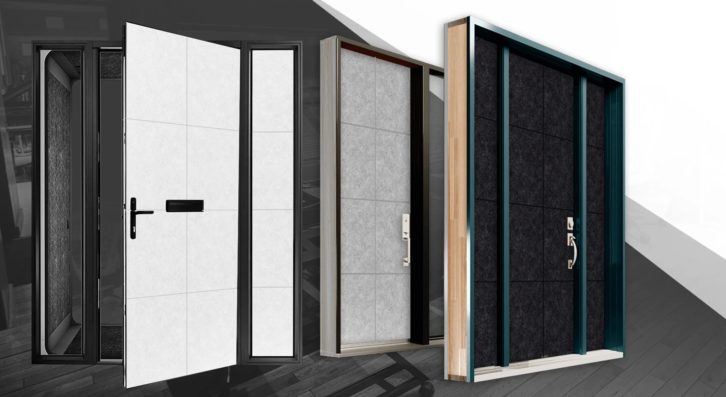
Workbench submissions are encouraged and qualify for SBE recertification credit. Email [email protected].








